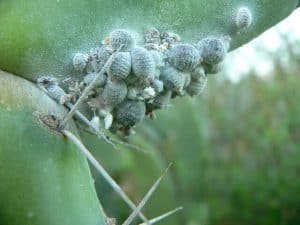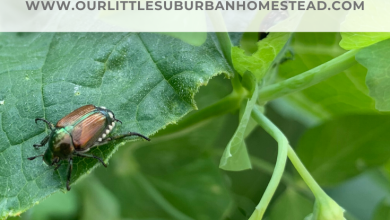Syringa Vulgaris: [Cultivation, Care, Pests and Diseases]

If you are looking to add a touch of color and a lot of elegance to your garden, sign up with Syringa Vulgaris and you won’t regret it.
 It is a medium-sized tree that produces green leaves and flowers that vary from pink to purple, creating a very beautiful environment.
It is a medium-sized tree that produces green leaves and flowers that vary from pink to purple, creating a very beautiful environment.
It has particular but not demanding care characteristics, so it will be of benefit even to less experienced growers.
What is Syringa Vulgaris?
 It is a species of the deciduous family that stands out for offering very showy flowers with a tubular structure and a crown.
It is a species of the deciduous family that stands out for offering very showy flowers with a tubular structure and a crown.
The colors of the flowers occupy the variations of lilac or purple, but white versions are found in some cases. Thanks to its main color, in some areas it is called Lilac.
The leaves are of common characteristics, small to medium in size and green in color. It also generates a dry fruit that has a couple of seeds inside.
It has a utility oriented to the ornamental. It occurs in areas where the winter reaches temperatures below 0º C for its hibernation process.
Where should we plant it?
 The ideal place to keep Syringa Vulgaris is in full sun, although it can tolerate semi-shade if it has a good part of the day with light.
The ideal place to keep Syringa Vulgaris is in full sun, although it can tolerate semi-shade if it has a good part of the day with light.
It is best when it is in a clear area, as it generates branches that spread out in various directions and is one of its main attractions.
As for the soil, it must be able to drain the water at a good speed, while maintaining humidity.Acidic soils do not do well, so it is essential to measure the pH before planting.
The characteristics of its trunk allow it to be planted in the garden or in a pot.
When should Syringa Vulgaris be cultivated?
In spring and taking into account that the risk of frost has passed.
The plants that are in pots will have to be transplanted every two years, taking care that it is also in this time of better climatic behavior.
How do we prepare the land?
It needs the soil to have a good level of nutrients, either obtained through fertilizers or humus.
So, if you have poor soil in this sense, it will be essential to start the adaptation process before the next spring arrives. The use of mulch is also recommended, but this will be incorporated after planting the tree.
How to sow a Syringa Vulgaris step by step?
Lilac can be planted in three ways: grafting, cuttings and layering.
grafts
In the case of grafts, the plants will be obtained from an agricultural store and they will be planted in the chosen place, taking care to moisten the soil well.
cuttings
Cuttings should be removed (preferably) in spring. To speed up the root growth process, it would be good to take advantage of a rooting agent and place the cutting in a pot with vermiculite.
After they are strong and have grown a few inches, you can transplant them to a more suitable pot or the garden according to your preferences.
elbowed
 The case of the elbows will only be possible to implement based on plants that are about two years old.
The case of the elbows will only be possible to implement based on plants that are about two years old.
From one of its branches a ring of bark is extracted that we will keep covered with universal substrate inside a dark plastic bag that prevents the passage of light.
This substrate must be moist. In the latter case, it is a slower process since it will require a minimum of three months of rest.
However, with cuttings results will be achieved in six weeks. And if you want to proceed safely and as quickly as possible, grafts are the ideal alternative.
What care do you need?
 The Syringa Vulgaris needs similar care to other types of species such as: irrigation and fertilizer.
The Syringa Vulgaris needs similar care to other types of species such as: irrigation and fertilizer.
The plant is capable of working with a few days of drought, but it is better not to make it suffer, so a period of two weekly waterings will be fine.
When summer arrives and the temperatures are much higher, it will be better to administer humidity three to four times a week.
The fertilizer is also essential so that it can develop and flourish with enthusiasm. As soon as spring arrives, it will be the ideal time to start adding organic fertilizers at least once a month.
What pests and diseases attack Syringa Vulgaris?
 In the field of pests, it can be attacked by: mites, cochineal. As for diseases, they become common: powdery mildew and virosis.
In the field of pests, it can be attacked by: mites, cochineal. As for diseases, they become common: powdery mildew and virosis.
When it is the cochineals that attack, it will suffice to use an anti-cochineal product.
The mites, for their part, cause the plant not to develop its flowering process normally, so they must be worked with acaricides.
Powdery mildew is a disease that damages many species of trees, producing conditions on the leaves. The good news is that with a fungicide it will disappear.
However, the issue with virosis is much more unfortunate because there is no cure and the only possible action is the absolute elimination of the plant. The symptoms that the virosis has attacked include a series of yellow spots on the new leaves, which tend to deform afterwards.
We would all like to have a lilac plant in the garden and if you have come this far we invite you to get down to work.
How long does Syringa vulgaris live?
With proper care, this plant can live between 10 and 15 years, depending on its environment.
How long does Syringa vulgaris take to grow?
It is a slow-growing shrub, so it can take more than 3 years to grow properly.
However, over time its development speeds up.
How long does it take to produce fruit?
In general, it takes 3 to 4 years to bear its first fruits, needing time to settle, grow and root properly.
Can it be grown in a pot?
Yes, it is a plant that can be grown properly in a pot, as long as it is kept outside and in a place where it has constant sun.
How many times does Syringa vulgaris produce fruit?
It produces fruits only once a year, after the flowering that occurs in spring and can last a long time on the plant before maturing.
Should Syringa vulgaris be pollinated to obtain fruit?
Although its flowers are usually mostly hermaphroditic, this plant requires correct pollination in order to bear fruit.
The insects that are responsible for pollination are anthophiles and lepidoptera.
How cold can Syringa vulgaris tolerate?
It usually withstands significant frosts that reach -18ºC for long periods, managing to survive the entire winter in this climate.
How many Syringa vulgaris can be planted per hectare?
It is a plant that can be planted very close to others, so 600 specimens or more could well be planted in a single hectare.
What type of fertilizer does Syringa vulgaris need?
It is convenient to put fertilizers such as compost, manure or guano, according to the preferences of each one during the spring and summer.
How much heat and/or drought can Syringa vulgaris tolerate?
Once established in its habitat and mature, this plant can withstand drought without problems and without altering its living conditions.
In addition, it is a friend of heat, being used to withstand high temperatures of up to 40ºC.
Bibliography and references
- Lopez Gonzalez, Gines. (1982). The INCAFO guide to the trees and shrubs of the Iberian Peninsula. INCAFO. Madrid Spain.
- Haas, Hansjord (2008). Pruning of trees and shrubs. European Hispanic Publisher. Barcelona, Spain.
- Pino Perez, JJ; Rial Pousa, D.; Silva-Pando, FJ; Camaño Portela, JL; Pino Perez, R. (2010). Contribution to the non-native flora of Galicia. Avirian bulletin. BIGA Association (Biodiversity in Galicia). Reproduced from: http://www.biga.org/Plantae/Publicaciones/Contribucion_Flora_Aloctona_Galicia_BolAur2010.pdf
- Clavero, Juana (2019). Notes on the genus Syringa L. (Oleaceae) and its presence in
Spain. Reproduced from: https://www.researchgate.net/profile/Jose_De_Juana_Clavero/publication/332082883_Notas_sobre_el_genero_Syringa_L_Oleaceae_y_su_presencia_en_Espana/links/5c9e81e2299bf11169501205/Notas-sobre-el-genero-Syringa-L-Espana-presencia.pdf-y
[pt_view id=”f54fcb1evj”]




![Photo of Types of Trees: [Characteristics and Names]](https://www.complete-gardening.com/wp-content/uploads/2022/08/types-of-trees-characteristics-and-names-390x220.jpg)